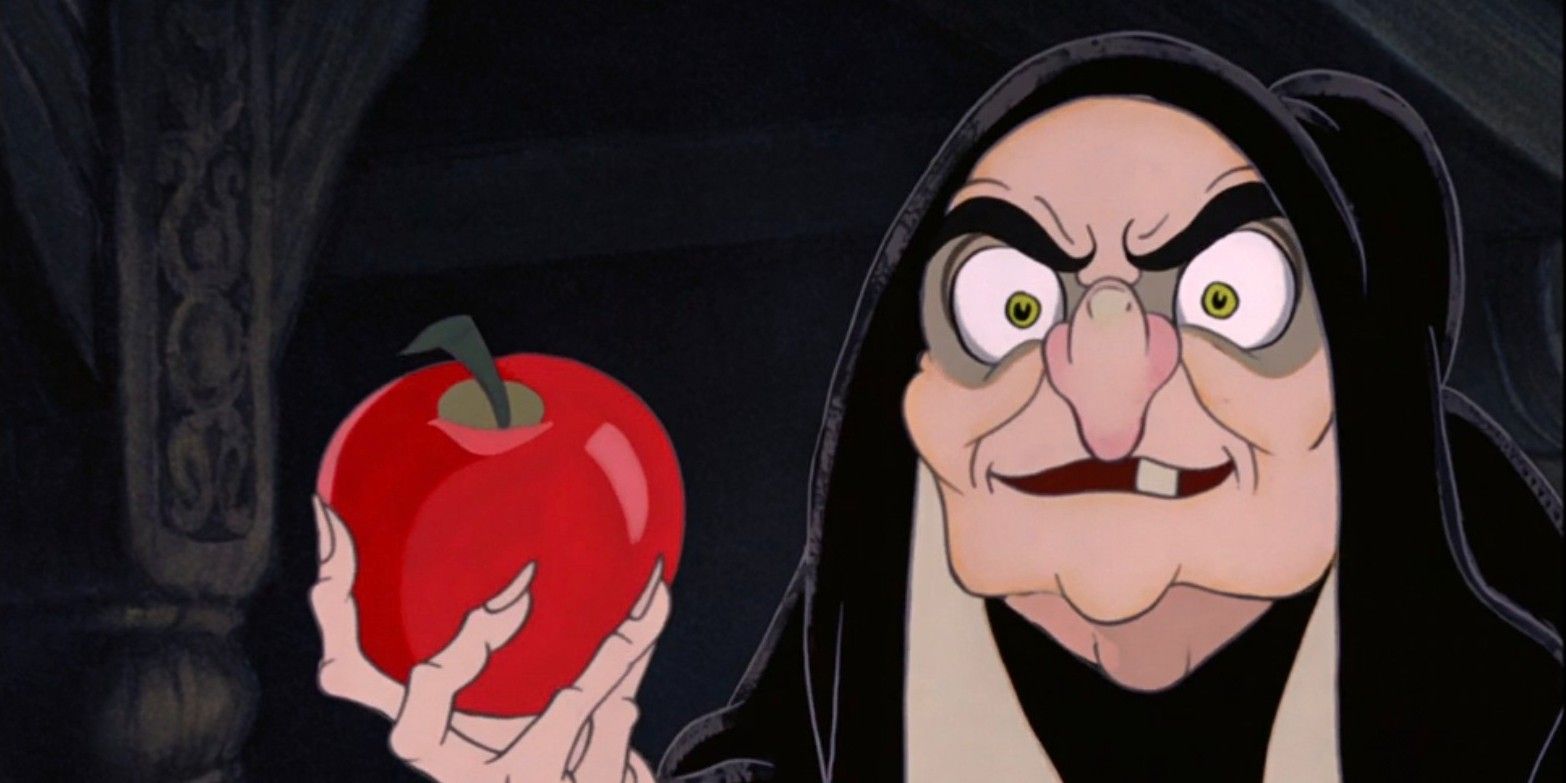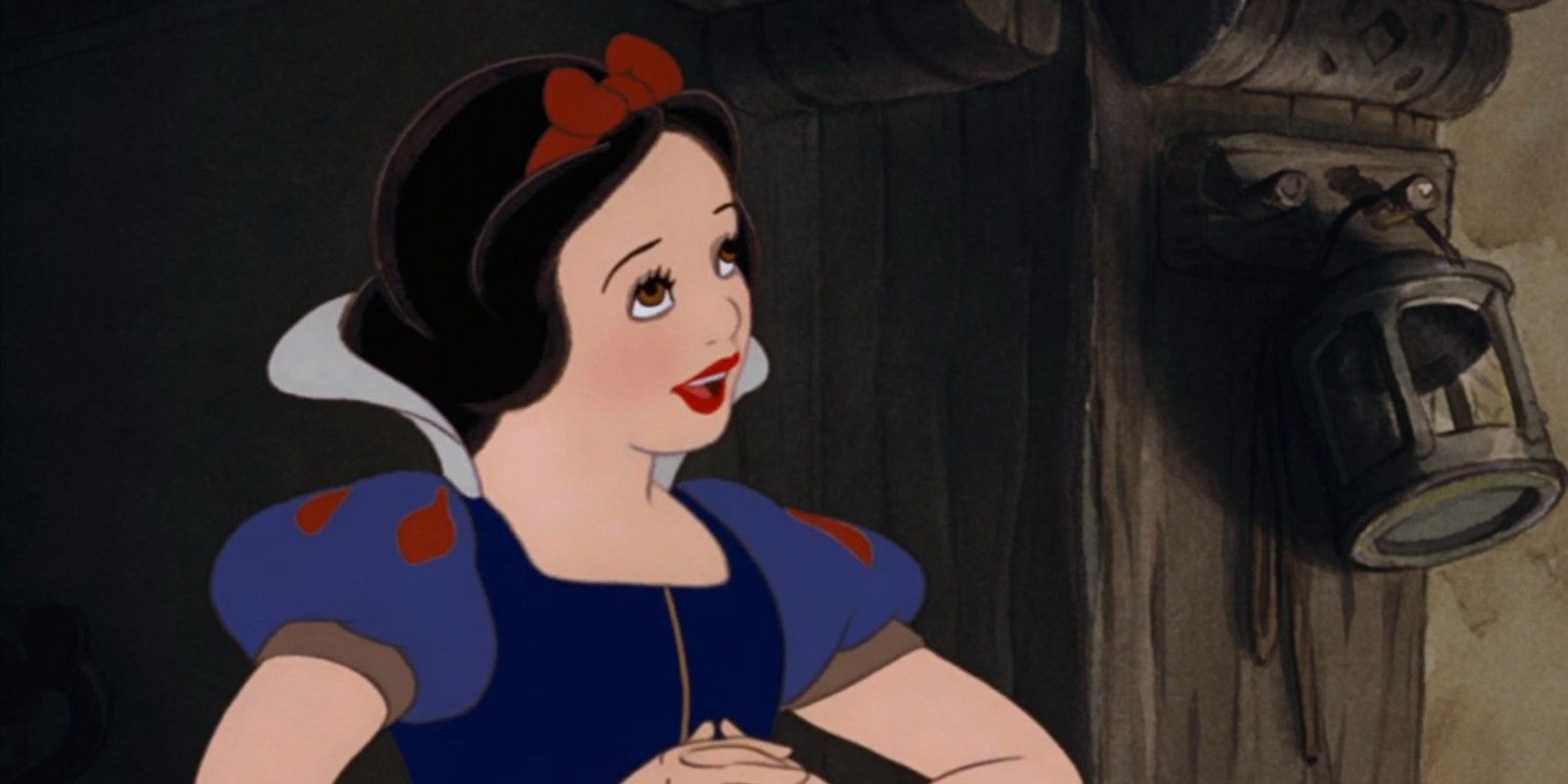Film adaptations tend to be criticized for altering the original story, but one change Disney made to Snow White and the Seven Dwarfs actually improved it. The original story by the Brothers Grimm follows a typical fairy tale format; the titular character is a conventional hero who comes out on top despite missteps, and the Evil Queen is a straightforward villain who gets her comeuppance in the end. However, when Disney adapted the fairy tale as its first full-length animated feature in 1937, it changed one aspect of the Evil Queen’s character that helped the company’s version of Snow White avoid a narrative issue present in the original tale.
According to J.B. Kaufman’s book, Snow White and the Seven Dwarfs: The Art and Creation of Walt Disney’s Classic Animated Film, the Evil Queen (disguised as an old woman) doesn’t give Snow White any reason to take the poisoned apple in the Brothers Grimm version. This differs from the Disney movie, where the Evil Queen tells Snow White that a bite from the apple will make all her dreams come true. This change to the Evil Queen’s actions in Snow White adds motivation to the hero’s decision to take the apple. This makes her a more relatable character and helps cement Snow White as one of Disney’s best movies.
How Disney’s Villain Change Made A Better Snow White

Disney’s change to the original fixes the issue of Snow White’s baseless acceptance of the apple, giving Snow an incentive to trust the random old woman. It also makes the Evil Queen more cruel and frightening, exploiting Snow White’s hopes for love and happiness. Although a story like Snow White is never going to be fully realistic, Disney’s villain change makes the characters’ actions more relatable and reasonable to audiences.
Changing Snow White to give a reason for the titular character to accept the apple also fixes a weird plot point in the story. Right before Snow White encounters the Evil Queen in disguise as the old lady, Doc tells Snow White to beware of strangers before he and the other dwarves depart for the mines. Without the Evil Queen telling Snow White that the apple grants wishes, it seems bizarre that Snow White would blindly trust a stranger right after being told not to. However, Disney’s change to the poison apple makes it more understandable why Snow White would forget Doc’s warning, as she was offered something too special to pass up.
Disney’s Villain Change Makes Snow White’s Arc Make More Sense

Disney tweaking the Evil Queen’s villainous acts in Snow White not only improves the movie generally but the titular princess’ arc specifically. In the original story by the Brothers Grimm, Snow White accepting the poisoned apple from the Evil Queen without any reason makes her seem gullible. In Disney’s Snow White, she has a clear yearning throughout the movie to find a sense of love, safety, and belonging. The apple’s alleged wish-granting powers align with this motivation to find a sense of belonging that is laid out throughout Snow White, making it more reasonable for the title character to accept the apple from the old woman. Because of the change to the original Snow White and the Seven Dwarfs story, filmmakers were able to strengthen both the titular character and the movie as a whole, helping it endure as one of Disney’s most timeless creations.




